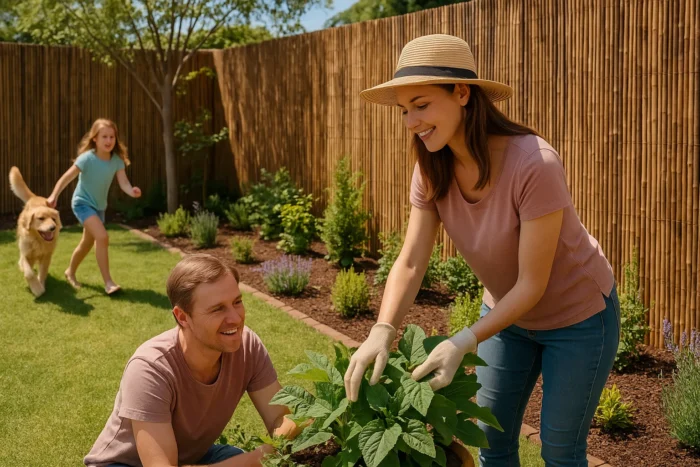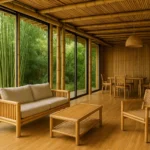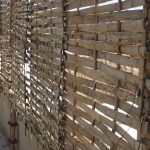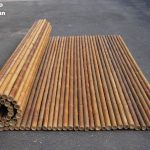Homeowners across Australia face a common dilemma when it comes to their outdoor spaces. We get it, you want to enjoy your backyard or garden without feeling like you’re on display for the neighbours.
Traditional fencing options often feel too harsh or industrial, whilst hedge plants can take years to establish proper privacy. Bamboo screening is the perfect middle ground that solves both problems at once.
We personally love how the bamboo material maintains airflow and lets filtered light through, so you don’t get that boxed-in feeling of solid barriers in smaller yards. In this blog, we’ll explore how bamboo screens add the perfect blend of privacy and style to your gardens.
We’ll also look at some great design and installation options, so you can pick the one that complements your Australian gardens beautifully. Let’s get started!
Why Bamboo Screening Changes Outdoor Spaces
You’ve probably noticed more and more Aussie gardens featuring bamboo these days, and there’s a good reason for that. See, unlike timber fencing that looks heavy and dominating, or metal screens that feel cold and industrial, bamboo provides any structure you need while still feeling organic and welcoming.
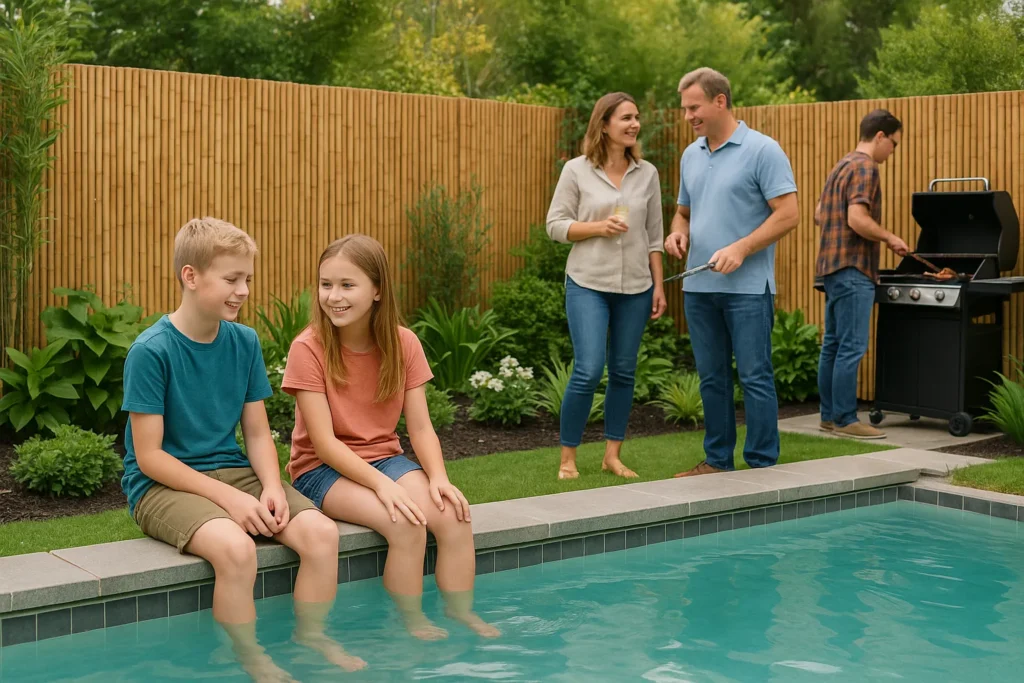
The difference really comes down to how bamboo works with your existing landscape rather than fighting against it. You know how traditional materials create sharp divisions that make your yard feel chopped up into sections. Well, bamboo screening actually flows naturally with garden beds, pool areas, and even outdoor entertaining zones.
The vertical lines add height and interest without overwhelming smaller spaces. What we find particularly impressive is how bamboo panels can completely shift the mood of a backyard. The natural texture catches light beautifully throughout the day, which gives you visual interest that changes as the sun moves across your property.
After working with various screening materials over the years, we’ve seen firsthand how bamboo creates a great balance between privacy and openness that so many modern homeowners are after nowadays.
4 Benefits of Bamboo Panels for Your Garden
Now that we understand the appeal, let’s break down what makes bamboo panels such a smart choice for Australian gardens. The practicality really speaks for itself once you see how they perform in real outdoor conditions.
- Creates Instant Privacy: You don’t have to wait years for plants to fill in or deal with patchy coverage. Because bamboo screening gives you immediate privacy around your pool area, along fence lines, or anywhere you want to block sightlines from neighbours.
- Adds to the Natural Beauty: Instead of competing with your landscaping, these panels become part of the overall design. They work beautifully with native Australian plants and add that relaxed, tropical feel that so many homeowners love.
- Eco-Friendly Choice: Bamboo is one of the most sustainable materials you can choose for your outdoor space. It grows incredibly fast compared to timber alternatives, and harvesting doesn’t damage the root system.
- Versatile Design Options: From creating cosy corners in larger yards to defining spaces around entertaining areas, bamboo panels adapt to whatever your garden needs. You can use them as full perimeter fencing, accent pieces, or even as decorative elements near your house.
Durability of Bamboo Fencing in Australian Conditions
Let’s address the elephant in the room: how well does bamboo actually hold up in our harsh Australian climate? We get this question a lot, and honestly, the durability might surprise you.
Quality bamboo screening can last anywhere from 15 to 20 years with proper care, which stacks up pretty well against other outdoor materials.
It’s mostly because bamboo naturally handles moisture and temperature changes. While timber can warp, crack, or rot over time, bamboo, on the other hand, has a natural flexibility that helps it cope with our extreme weather swings. From the scorching summer heat to those sudden downpours we get, bamboo panels bend rather than break under pressure.
What really impressed us during our testing was how well bamboo fencing handles strong winds. The individual canes flex and move together, distributing the force rather than creating rigid resistance points that can snap. So, if you’re living in a coastal area where salt air and wind are constant challenges, we highly recommend trying Bamboo!
Pro tip: Like any natural material, bamboo will weather over time. The natural colour will gradually fade to a lovely silver-grey patina, but this doesn’t affect the structural integrity.
Caring for Your Bamboo Screening
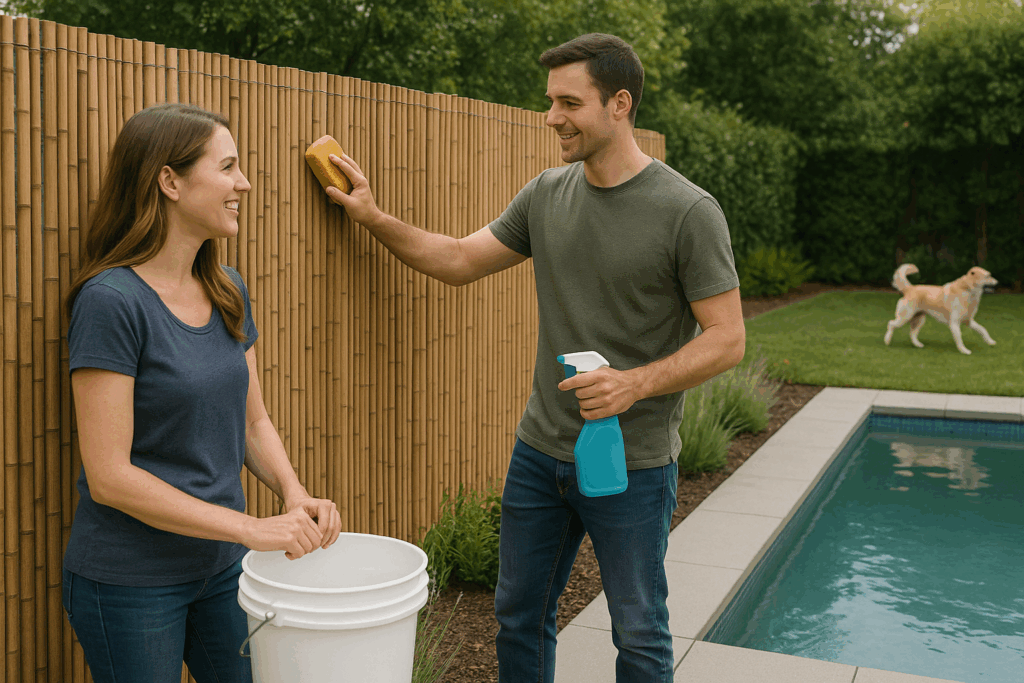
Now that we’ve covered durability, let’s move on to keeping your bamboo looking its best. The good news is that maintaining bamboo is easy, and if you do it right, it will help your panels maintain their natural beauty for years to come.
Using Bamboo Protector Products
A quality bamboo protector is your first line of defence against the elements. These products help seal the bamboo and prevent natural oils from being lost too quickly. We recommend applying a bamboo protector every 12-18 months, especially if your screening gets direct sunlight for most of the day.
Bamboo Cleaner Applications
Regular cleaning keeps your panels looking fresh and prevents dirt and grime buildup. A good bamboo cleaner removes other dirt that can accumulate over time, particularly in dusty areas or near busy roads. Simply spray the cleaner onto the bamboo, let it sit for a few minutes, then rinse with your garden hose.
Preventing Mould Growth
In humid conditions, you might notice some mould growth starting to appear on your bamboo screening. Don’t panic, this is normal for any outdoor material.
The trick is catching it early and using products specifically designed (or white distilled vinegar) to remove fungi before it spreads. Regular cleaning and good air circulation around your panels will help prevent most mould issues from developing in the first place.
Installation Options and Design Ideas
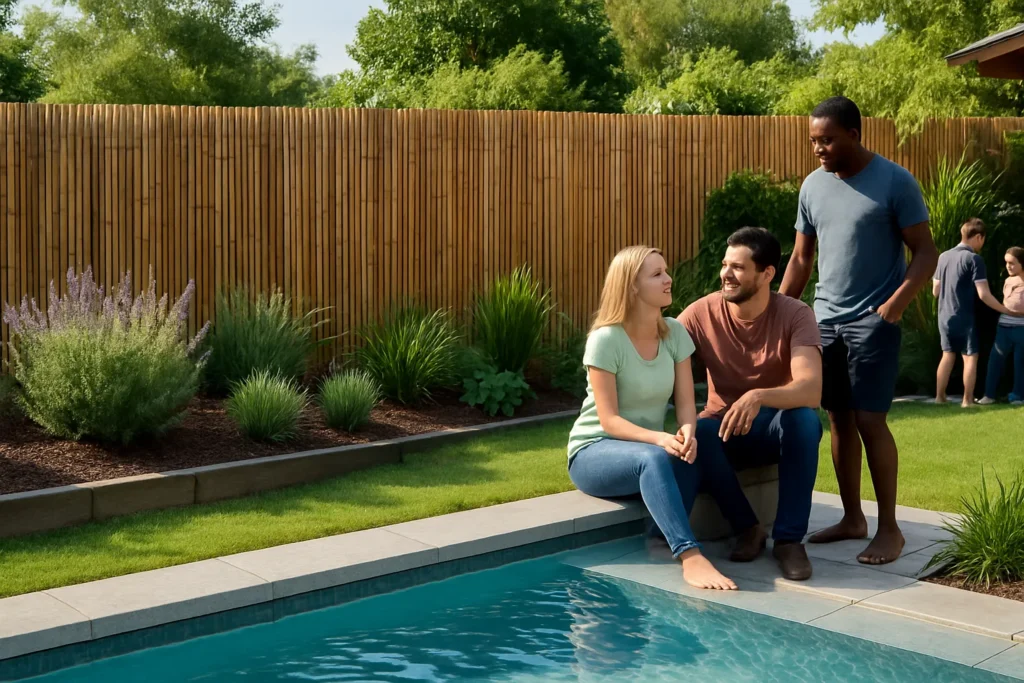
So you’re ready to add bamboo screening to your space, but wondering where it’ll work best? There are heaps of creative ways to use bamboo panels around your property, and the placement really depends on what you’re trying to achieve.
Pool Area Applications
Pool areas are probably the most popular choice we see. The bamboo creates a lovely tropical feel around your pool while giving you privacy from neighbours. Just keep in mind that pool chemicals can affect the natural oils in bamboo, so you’ll want to rinse the panels regularly.
Garden and Backyard Design Ideas
For garden borders, bamboo panels work beautifully to separate different areas of your yard. You can use them to hide compost bins, create intimate seating areas, or even as a backdrop for your favourite plants.
Full Perimeter Fencing
Fencing up your entire outdoor space gives you maximum privacy and can really change your entire outdoor space for the better. It’s a bigger investment in materials, but the impact on your backyard’s feel and functionality is significant.
Pro tip: Consider mixing heights and panel styles to create visual interest rather than using identical screening throughout your entire space.
Create the Perfect Outdoor Retreat
The beauty of bamboo screening is that it solves multiple problems at once. You get the privacy you need, the natural look you want, and the sustainable materials that align with responsible landscaping choices. Plus, the versatility means it works just as well in compact city backyards as it does in larger suburban spaces.
We’ve covered quite a bit of ground when it comes to bamboo screening for your garden. From understanding why bamboo works so well in Australian conditions to exploring the practical benefits like instant privacy, natural beauty, and eco-friendly credentials, it’s clear that bamboo panels have something special for outdoor spaces.
Ready to refine your outdoor space with quality bamboo screening? Visit us at Bamboo Expo to explore our range of bamboo panels and fencing options. Our expert team can help you choose the right materials and design solutions to create the perfect blend of privacy and style for your Australian garden.
